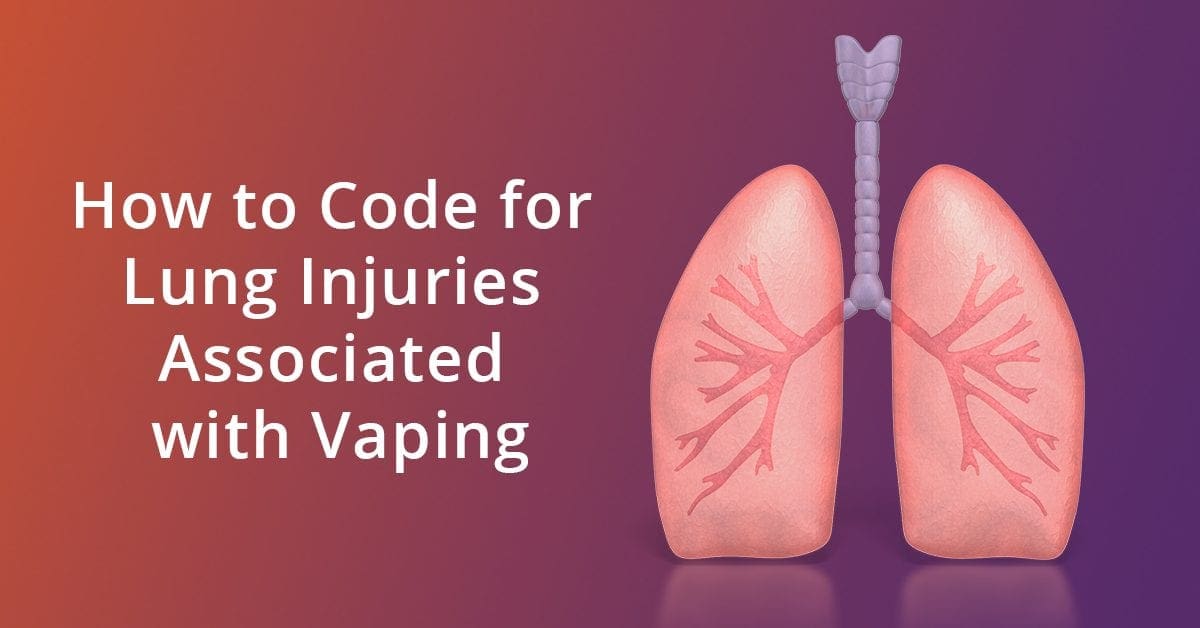Call us toll-free: 800-878-7828 — Monday - Friday — 8AM - 5PM EST

From the AAP Division of Health Care Finance
New guidance on coding for health care encounters related to e-cigarette, or vaping, product use associated lung injury (EVALI) has been released by the Centers for Disease Control and Prevention’s National Center for Health Statistics.
The guidance details the use of International Classification of Diseases, Tenth Revision, Clinical Modification (ICD-10-CM) codes and is consistent with current clinical knowledge about e-cigarette, or vaping, related disorders.
The guidance is intended to be used in conjunction with current ICD-10-CM classification and the ICD-10-CM Official Guidelines for Coding and Reporting that took effect on Oct. 1, 2019.
Topics addressed in the guidance are listed below. For specific codes, see resources.
Lung-related complications
For patients with EVALI, assign the code for the specific condition, e.g., J80, Acute respiratory distress syndrome.
For patients with acute lung injury but without further documentation identifying a specific condition (pneumonitis, bronchitis), assign code J68.9, Unspecified respiratory condition due to chemicals, gases, fumes, and vapors.
Poisoning and toxicity
For patients who have been poisoned by swallowing, breathing or absorbing e-cigarette liquid through their skin or eyes, use code T65.291-, Toxic effect of other nicotine and tobacco, accidental (unintentional); includes Toxic effect of other tobacco and nicotine NOS (not otherwise specified).
– indicates a seventh character is needed.
Substance use, abuse and dependence
For patients with documented substance use, abuse or dependence, additional codes identifying the substance(s) used should be assigned. Follow the hierarchy classification rules already in the guidelines if (for example) use and abuse are both documented. Assign as many codes as appropriate, such as cannabis-related disorders (F12.- ) and nicotine-related disorders (F17.-) ifboth are documented.
For vaping of nicotine, assign code F17.29-, Nicotine dependence, other tobacco products. Electronic nicotine delivery systems (ENDS) are non-combustible tobacco products.
Signs and symptoms
For patients presenting with any signs or symptoms (e.g., fever) but a definitive diagnosis has not been established, assign the appropriate code(s) for each of the presenting signs and symptoms. Signs or symptoms that are inherent to a definitive diagnosis should not be reported separately.
